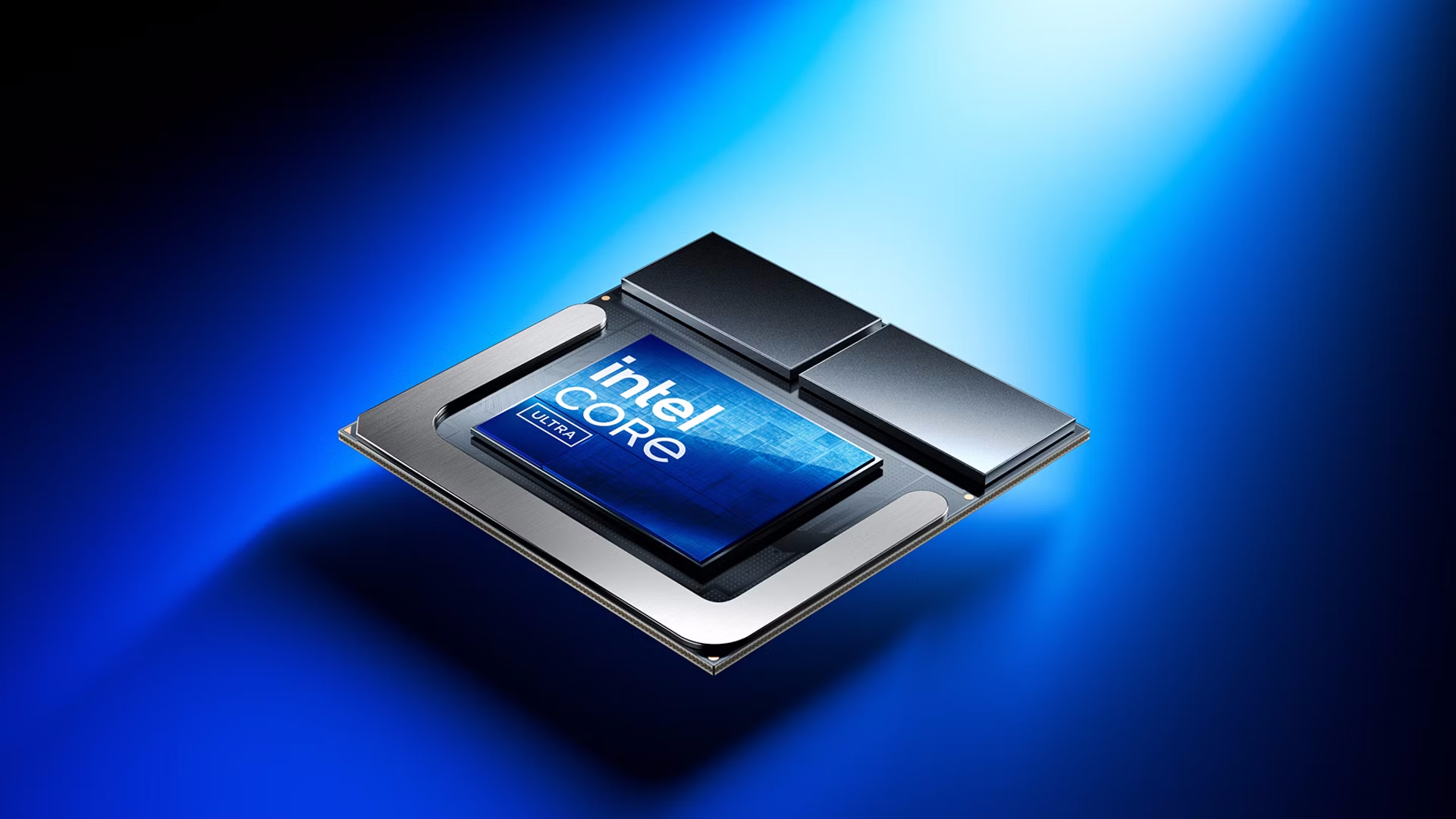
Intel officially released its Lunar Lake mobile processors today, and we have a review of the Asus Zenbook S14 with the Core Ultra 7 258V. This is supposed to be the new king of laptop processors, with improved battery life being a key element. But it's also the showcase for Intel's latest GPU architecture, and while no integrated graphics solution will rank among the best graphics cards and these aren't positioned as gaming laptops, we want to see how Intel's latest stacks up against the competition.
The Core Ultra 9 288V comes with Intel Arc Graphics 140V, with the V indicating the power level of the chip. It's a nominal 30W part with a maximum turbo power of 37W. We're using the Core Ultra 9 in order to potentially remove power restrictions that might impact the Core Ultra 7 258V, with the hope of seeing higher, more consistent performance. This is also the debut of Intel's Battlemage GPU architecture, sort of — power limits and shared memory will be major limiting factors for any GPU workload.
To see what Lunar Lake and Battlemage bring to the table, we'll compare the new processor with the previous generation Meteor Lake chip along with AMD's Ryzen AI chip. Here's the quick rundown of core specs for the various chips we're looking at.
[Note: We have retested the games that used FSR3 upscaling and framegen to eliminate those technologies from the equation, as it seems framegen may have failed to work in at least one instance. We also tested with XeSS alongside FSR3 upscaling on both AMD and Intel GPUs, without framegen.]
What should be clear from the above table is that the three laptops we have for testing are not equivalent in a variety of ways. There are slightly different power targets, different CPU core counts, different tiers (Core Ultra 7/9 and Ryzen 9), different memory, and other places where they don't match up. There are also wildly different NPUs in play for AI workloads and even wildly different AI capabilities for the GPUs.
But I'm mostly interested in the graphics performance, so that will be the focus. And even here, we have some interesting changes relative to the previous generation Meteor Lake GPU. Both have eight Xe-cores (roughly similar to an AMD Compute Unit, aka CU), but where Meteor Lake's Arc Xe GPU omitted the XMX functionality, Lunar Lake's Arc Xe2 includes that. It should allow for better XeSS upscaling quality and performance; otherwise, we don't expect that to make much of a difference in graphics performance.
The Lunar Lake GPU also has a peak clock speed of just 2.05 GHz, down 200 MHz from Meteor Lake's 2.25 GHz and way, way below AMD's potential 2.9 GHz. AMD also has twice as many graphics clusters (CUs) as Intel, but half as many shaders per CU, giving peak theoretical compute of 5.94 TFLOPS. That's 41% more than the 4.20 TFLOPS on Lunar Lake and 29% more than Meteor Lake's 4.61 TFLOPS. Theoretical TFLOPS rarely tell the whole story, so it will be interesting to see how the new Arc Graphics 140V stacks up against the previous Arc Graphics; Intel says the new chips should be universally faster.
All three laptops support DDR5 (or LPDDR5) memory, but the actual memory used is often up to the laptop vendors — though not on Lunar Lake. We're using Asus Zenbook models in all three cases, and both the Meteor Lake and Strix Point models have DDR5 running at 7500 MT/s (the MTL says 7467 MT/s, but close enough). With dual-channel memory that works out to 120 GB/s of raw memory bandwidth — a far cry from what you get with even a modest dedicated GPU, but it should be reasonably sufficient for a laptop with integrated graphics. The new Lunar Lake laptop has 8533 MT/s LPDDR5X memory integrated onto the package, yielding a moderately higher 136.5 GB/s of bandwidth.
As I said, we're looking at apples and oranges in some respects, as there are many differences in the core specifications. Still, it's what we have available, so let's go ahead and run some gaming and graphics benchmarks to see where things land.
We have three laptops, all from Asus, and the MyAsus app also allows you to set a fan speed profile. The default is "Standard," but we've found that selecting "Performance" seems to increase the TDP limit and can help quite a bit with gaming performance. We initially tested each laptop with both the Performance and Standard fan modes (flip through the galleries to see the framegen results), but we'll stick with just Performance mode for the additional non-framegen testing. Windows 11's power profile was set to "Balanced" mode for all the testing shown here.
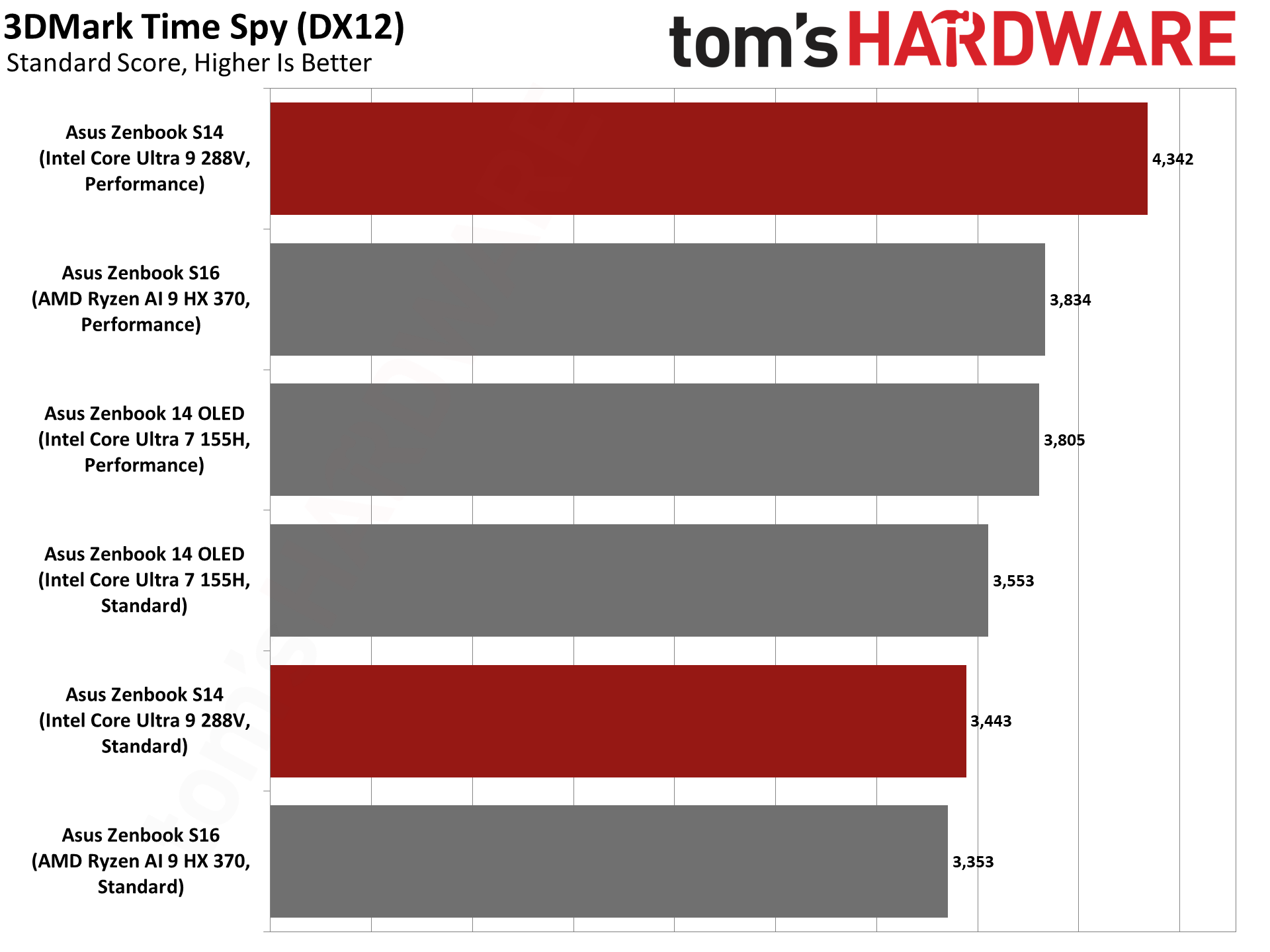
First up is 3DMark Time Spy. I don't like using synthetic benchmarks for normal GPU testing, but in this case it's a reasonable way to try and remove driver issues from the equation. Every GPU manufacturer should be intimately familiar with 3DMark, and ensuring the drivers work optimally is standard procedure. If the drivers are fully tuned for any games that we test, we'd expect the results to at least echo what Time Spy shows.
And what it shows is that, despite having theoretically less GPU compute available, Lunar Lake's Battlemage GPU comes out on top. It's not massively faster than the other chips, but it shows 13% higher performance than the Radeon 890M when both are using the MyAsus Performance mode fan profile. Compared to the previous generation MTL GPU, it's also 14% faster. Putting all three laptops into the Standard mode fan profile does change things a bit. All three laptops run slower, and the Lunar Lake GPU is now only 5% faster than the 890M but still 12% ahead of the Meteor Lake GPU.
One critical item to point out is that memory bandwidth on Lunar Lake is 13–14 percent higher than on the other two laptops, so instead of showing true gaming potential, 3DMark Time Spy might actually end up scaling more with bandwidth. Some games do behave that way, but plenty of others depend more on the GPU computational abilities rather than bandwidth. So let's check out some games...
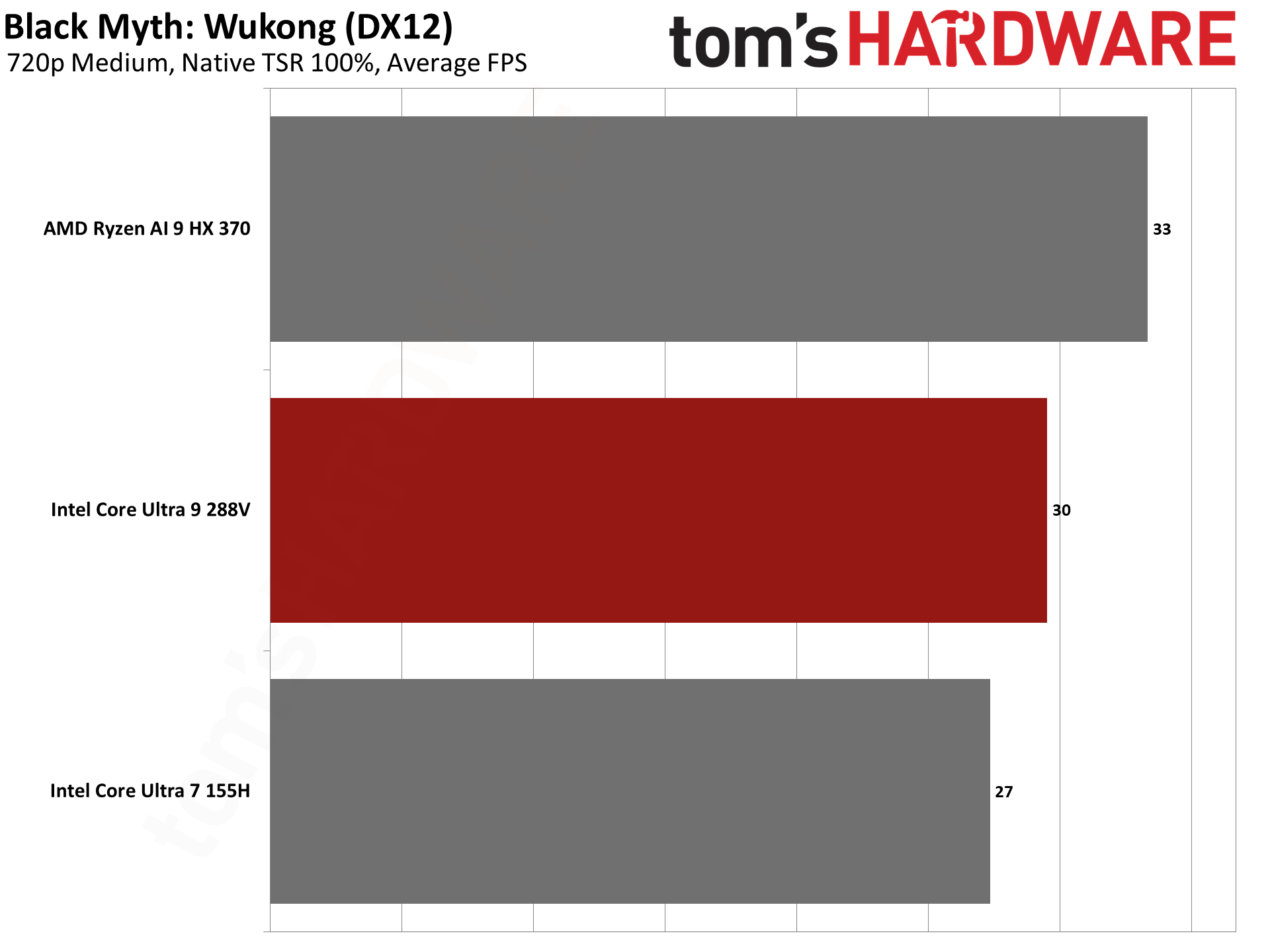
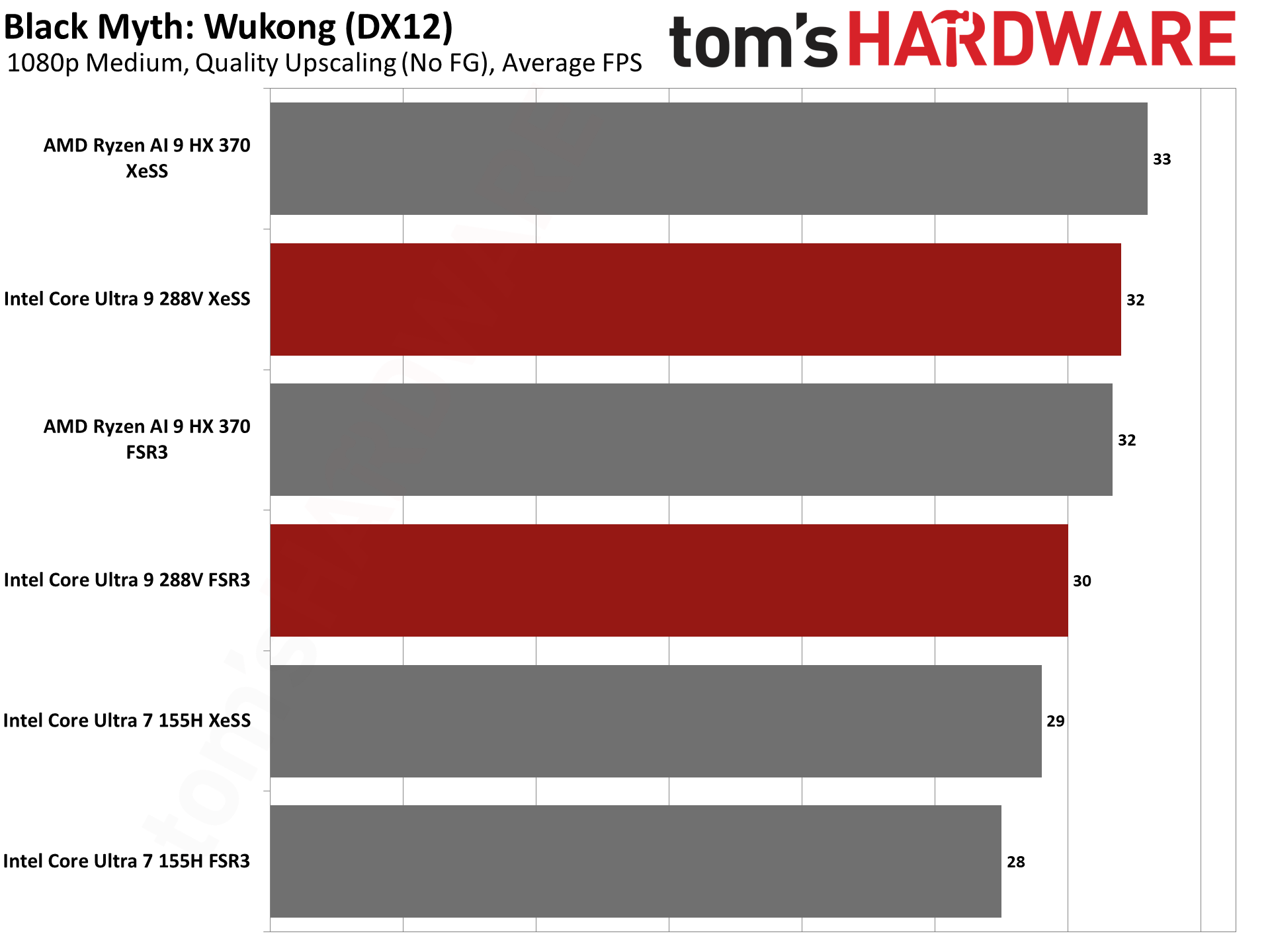
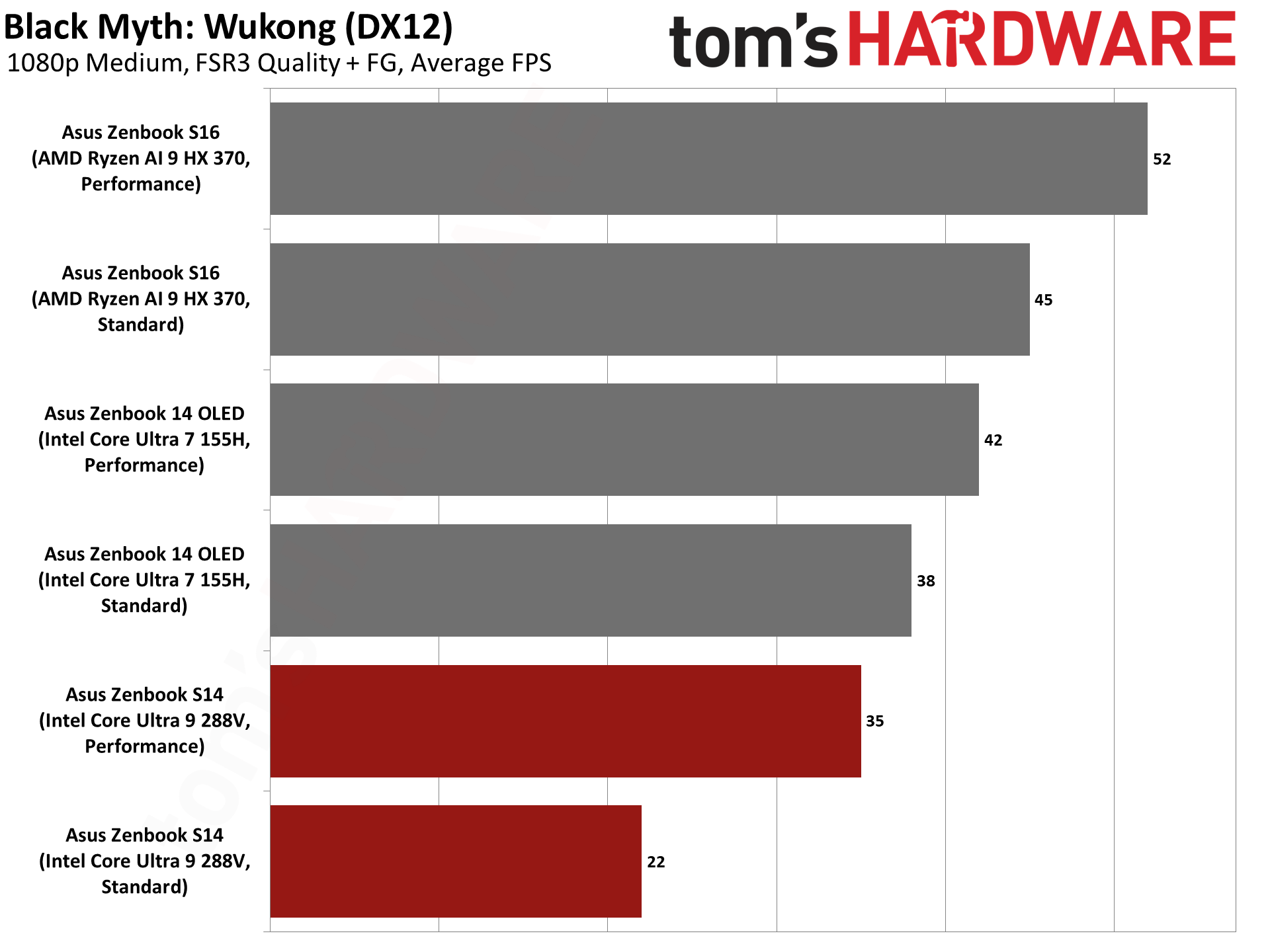
Black Myth Wukong is a recent release, which makes it a good showcase for any potential driver concerns. We're using Intel's latest preview drivers for the Lunar Lake system, AMD's 24.8.1 drivers on the Ryzen AI / Strix Point laptop, and the latest publicly available Intel 6077 drivers for Meteor Lake. (6078/5736 drivers just came out today for the retail Lunar Lake launch, but we used 6077 from late last week.)
Starting with the native 720p results, the standings don't look the same as 3DMark. The new Lunar Lake GPU still comes out 11% ahead of the Meteor Lake GPU, but now AMD's 890M ends up 10% ahead of Lunar Lake. This is the issue with synthetic graphics tests like 3DMark versus real-world gaming performance. We'll want to look into testing more games to come to any firm conclusion.
Bumping the resolution to 1080p and enabling quality mode upscaling in both XeSS and FSR3, AMD still comes out on top, with slightly higher XeSS performance compared to FSR3 performance. However, XeSS 1.3 uses larger upscaling factors so that's likely the cause. The two Intel GPUs also show better performance with XeSS than FSR3, though the biggest gap remains less than 10%.
Last in the gallery are the FSR3 results with frame generation enabled, which we retested as there were some anomalies. Things take a turn for the worse on Intel's new GPU here, as framegen does something for the Arc 140V, but it's definitely not working that well. Lunar Lake sees a 17% increase in fps — and half of the framegen frames have no user input so it will feel noticeably worse. That's in stark contrast to Meteor Lake, which improved by 50%, and AMD's 890M that achieved a 63% higher result than the non-framegen 32 fps.
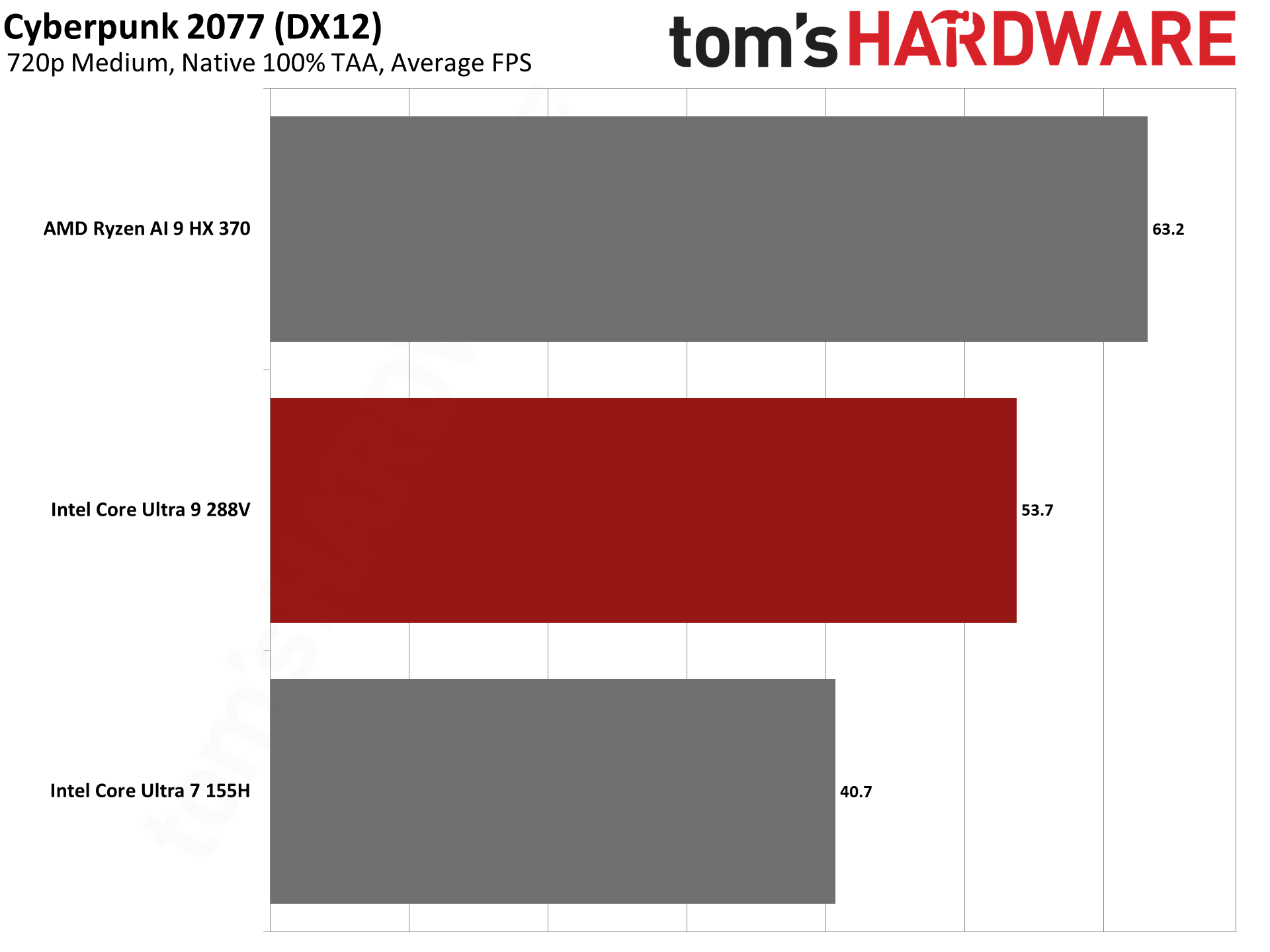
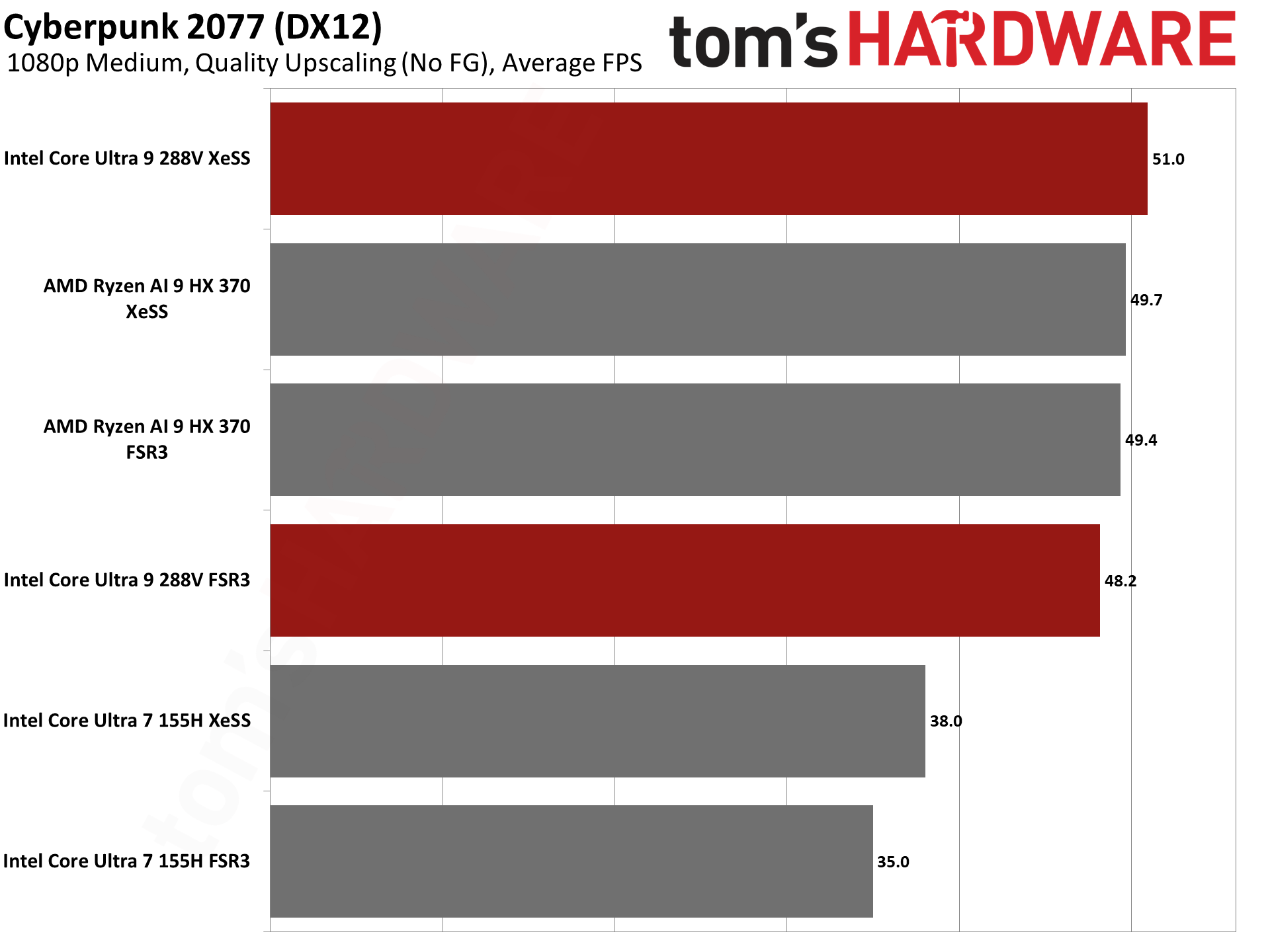
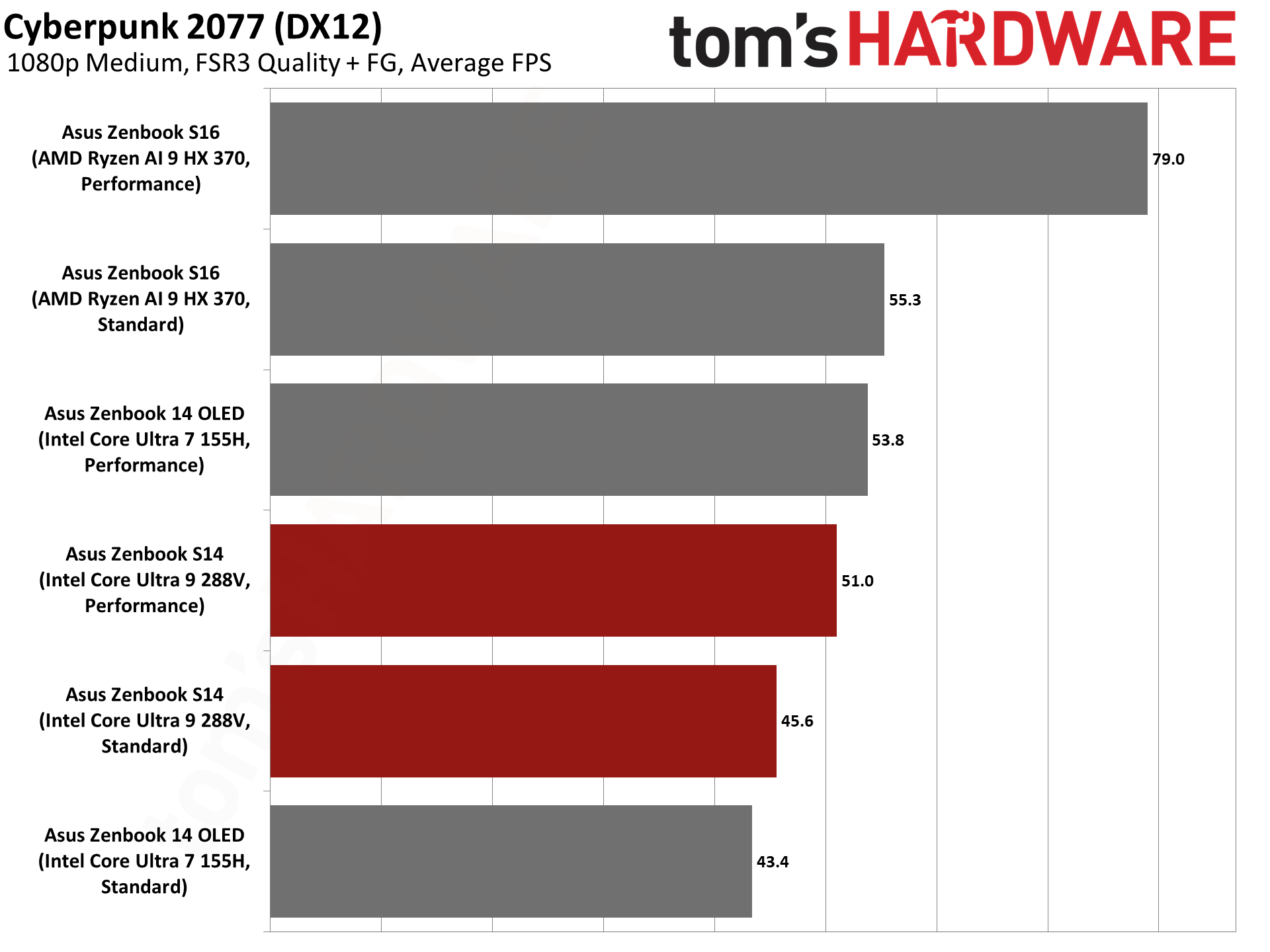
Cyberpunk 2077 has been around for a while, but it just (finally) received the promised FSR3 support, so we'll see how that goes. But let's start with the native 720p result, which removes any upscaling or framegen shenanigans from the equation.
Of our tests, this represents the best results from Intel's new Arc Graphics 140V. It's 32% faster than the previous Arc Graphics solution found in Meteor Lake, and since both are running in basically the same Asus 14-inch chassis, these are directly comparable. AMD's chip still beats Lunar Lake by 18%, but that's at least partially influenced by the larger 16-inch chassis that may have a higher TDP with our test settings.
Bumping to 1080p and enabling upscaling, again noting that XeSS 1.3 uses a larger scaling factor than FSR3 (and DLSS), the Arc 140V takes the top spot with 51 fps, narrowly edging past the GPU chip. AMD's performance is basically the same with XeSS as with FSR3, while Intel (not surprisingly) sees a bigger boost with XeSS. That applies to both Meteor Lake and Lunar Lake, with LNL getting a 6% increase while MTL gets a 9% boost.
Turning on FSR3 framegen completely changes the picture, however, with the Radeon 890M dominating the competition. It's 47% faster than MTL in performance mode and 27% faster in standard mode — so in this case, engaging the performance mode fan profile in the MyAsus app boosts performance by over 40%. Again, chassis size looks to be a factor, with the MTL laptop showing a 24% boost in performance while the newer LNL laptop gets a 14% boost.
As noted with Black Myth Wukong, Lunar Lake doesn't seem to appreciate FSR3 framegen much right now. It saw basically no benefit at all. AMD's GPU meanwhile got a 60% boost to fps in performance mode, and Meteor Lake saw a 54% increase. It's odd that framegen, which just uses GPU shader computation as far as we're aware, doesn't seem to want to run on Lunar Lake right now.
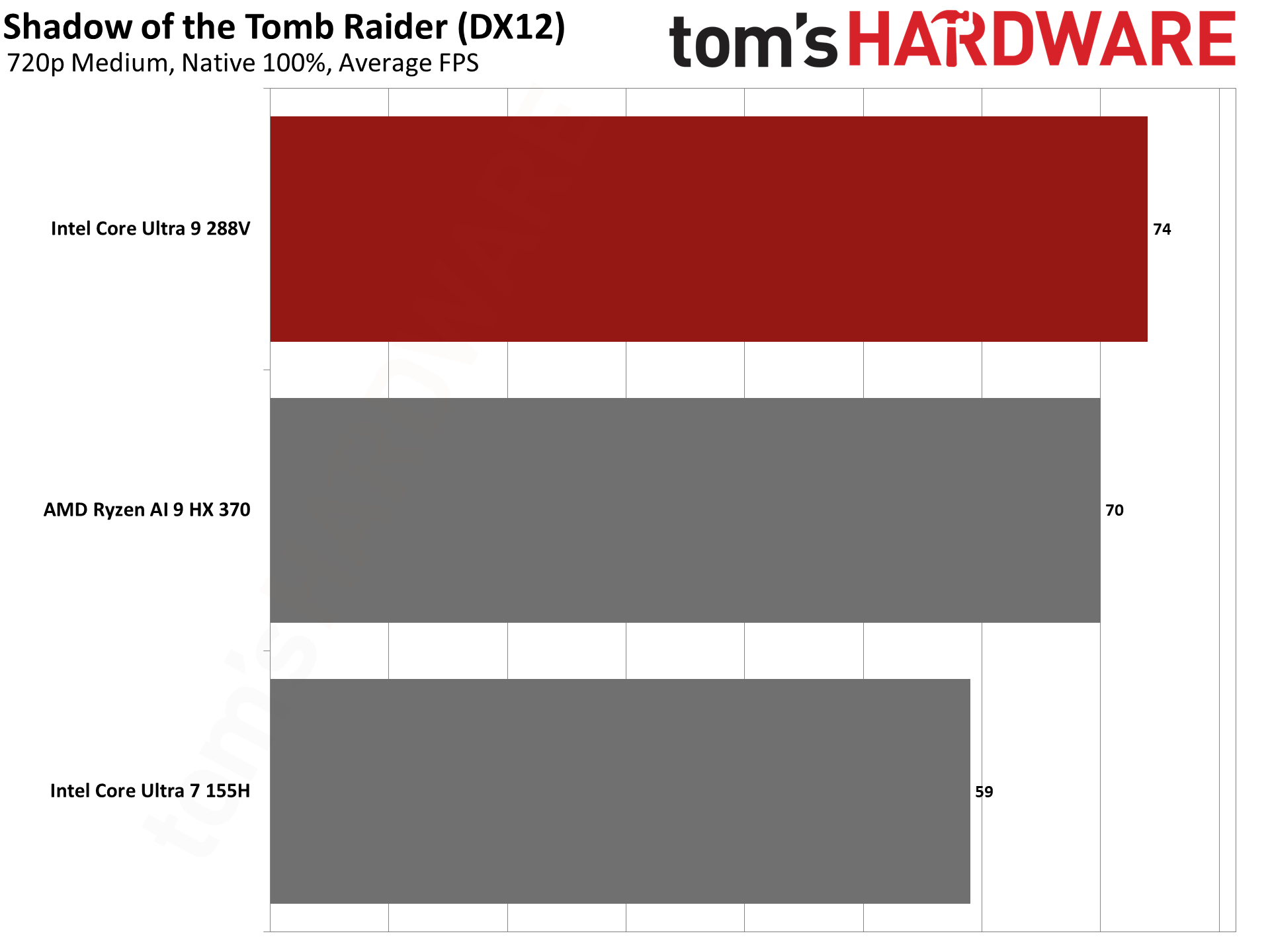
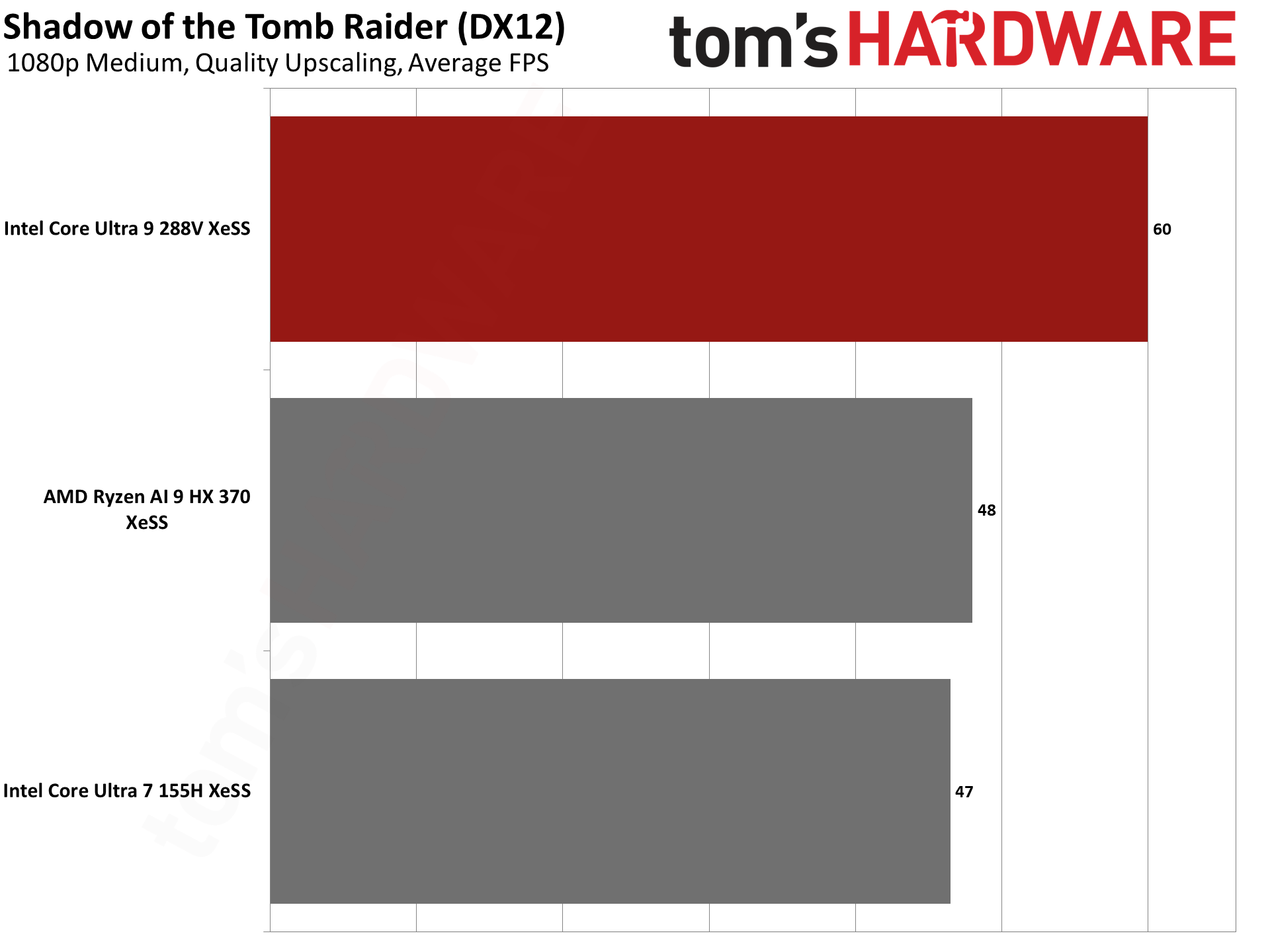
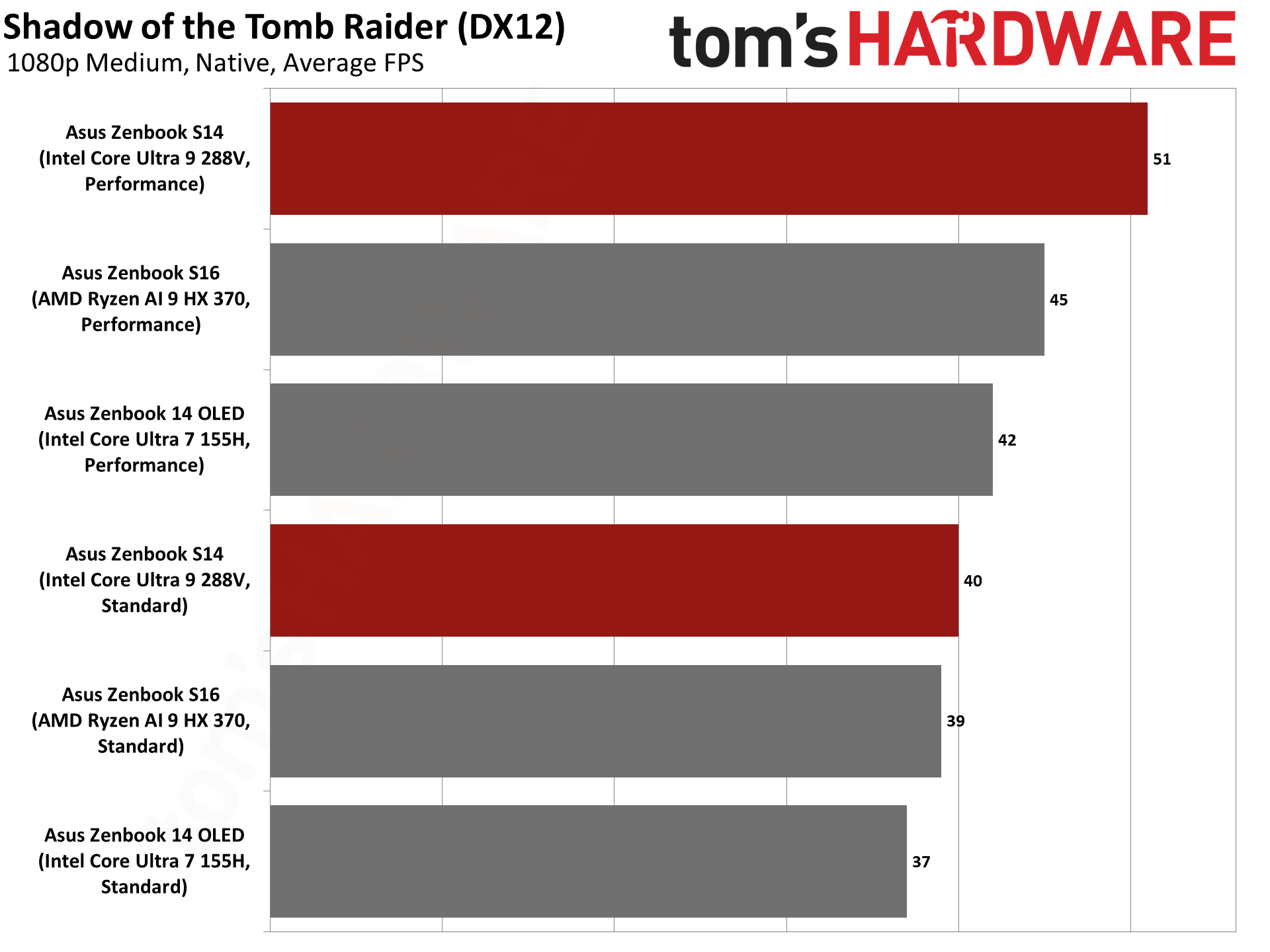
Last, we have Shadow of the Tomb Raider, an older game that should be good and fully optimized for any reasonable drivers. And, interestingly, we get a chart that looks more like 3DMark. There's no framegen this time, and only XeSS (or DLSS if you have an Nvidia GPU), so we opted to include native 1080p performance.
At 720p, the new Lunar Lake GPU claims the top spot with 74 fps, leading AMD's 890M by 6% and beating the Meteor Lake GPU by 25%. That's a good result for what is still likely a power constrained GPU — and having fewer CPU cores probably helps Lunar Lake's GPU make the most of the horsepower it has on tap.
Our second chart is with XeSS Quality mode enabled. Now, I think this is XeSS 1.2 or 1.1, not the latest 1.3, so the scaling factor is 67% — 2.25X upscaling. And the DP4a mode used on the Meteor Lake and AMD GPUs doesn't tend to look as good as the XMX mode running on the Arc 140V. AMD and Meteor Lake end up basically tied, while the new Arc 140V holds a 25% lead.
Finally, we have the native 1080p medium results. Overall, the Core Ultra 9 288V takes top honors with 51 fps in performance mode and 40 fps in standard mode. That's also the biggest improvement from engaging the higher speed fan mode, a 24% increase. The Core Ultra 7 155H only increased by 14%, while the Ryzen AI 9 HX 370 saw a 15% increase. The net result is that Lunar Lake comes out 13% ahead of Strix Point with both performance modes but only 5% ahead in standard mode. It's also 21% faster than Meteor Lake in performance mode and 11% faster in standard mode.
First Impressions of Lunar Lake's Arc Xe2 Graphics
With updated testing results that don't use FSR3 frame generation in Black Myth Wukong and Cyberpunk 2077, our overall impression of Lunar Lake's GPU improves quite a bit. It's not a massive generational performance improvement compared to Meteor Lake, but the 28–30 watt TDP of the two chips we tested probably limits how far Intel can push performance regardless — and memory bandwidth also makes a difference.
There are, however, still some oddities present, things which will probably end up being fixed in Intel's drivers. Why didn't framegen work at all on Lunar Lake, or work very poorly, when it seems to do just fine on Meteor Lake? It doesn't make sense for Intel to intentionally break AMD's tech, but it's also weird that it doesn't seem to work in general. We've tested FSR3 framegen on old Nvidia GTX cards and it tends to work fine, so why would Lunar Lake be any different?
Not shown in the charts, we also ran the same graphics tests on the 'lesser' Core Ultra 7 258V. The main differences between that chip and the Core Ultra 9 288V are the base power (17W vs 30W) and maximum clocks (100 MHz higher for the GPU clock on 288V). In our testing, at least in the standard fan mode, the two chips are within spitting distance of each other on our graphics tests. So, you can safely opt for the slower and less expensive Lunar Lake chip and only give up a very small amount of performance — which makes sense. Lunar Lake doesn't have lots of CPU cores even on the Core Ultra 9 288V.
Overall, the graphics performance from Lunar Lake and the Arc Graphics 140V, aka Arc Xe2 Battlemage, doesn't look particularly amazing, but we didn't expect to see much since we're dealing with integrated graphics. Power and memory bandwidth constraints often eclipse other factors. We've seen claims of double the performance (or at least performance per watt) on various integrated GPU solutions in the past, and those rarely pan out in the real world. With its current focus on ultraportable, low voltage, long battery life laptops, this is hardly the best showcase for Intel's next-generation Battlemage GPU architecture.
We hope that the results for the future desktop cards end up being far more impressive once Battlemage GPUs begin shipping. We also hope that driver issues and oddities continue to get resolved. Intel has improved in that area since the initial Arc launch, but AMD and Nvidia remain far more consistent in both game support and performance. There are times when Lunar Lake might come out ahead of AMD's Radeon 890M, but we suspect that over a larger test suite, Intel will encounter far more frequent anomalies in terms of game support and optimizations.







